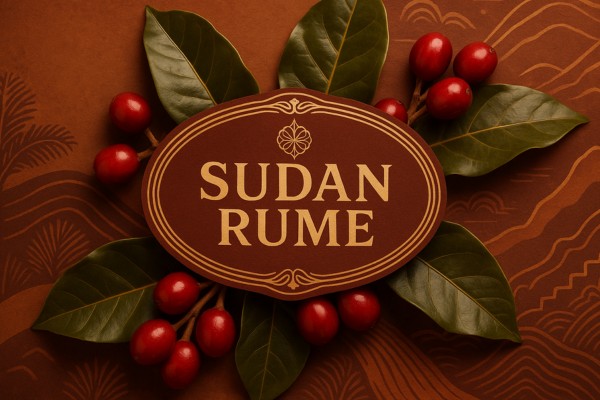
Sarchimor: The Other Rust-Resistant Hybrid
Meet Sarchimor, the important group of coffee varieties created by crossing the Costa Rican Villa Sarchi with the Timor Hybrid. Learn how it provides a crucial source of rust resistance while aiming for a higher cup quality than its famous cousin, Catimor.
Sarchimor: The Quality-Focused Hybrid
Alongside Catimor, the Sarchimor group of varieties represents a critical branch of the coffee family tree dedicated to fighting coffee leaf rust. Sarchimor varieties were created by crossing the Costa Rican Villa Sarchi with the disease-resistant Timor Hybrid.
The goal of this cross was the same as the Catimor project: to combine the desirable traits of a high-quality, traditional Arabica variety with the robust genetic resistance of the Timor Hybrid.
However, Sarchimor is often associated with a slightly higher potential for cup quality than its Catimor cousin. The Villa Sarchi parent, itself a mutation of Bourbon known for its elegant acidity and complex fruit notes, is believed to pass on a better genetic foundation for flavor. This has made the Sarchimor line a popular choice for breeding programs focused on creating disease-resistant varieties that can also excel in the specialty market.
A Global Breeding Effort
The initial crosses for the Sarchimor line were made by coffee research institutes in the mid-20th century. Like the Catimors, this genetic material was then shared with research centers across the coffee-growing world.
Local breeding programs in countries like Honduras, Costa Rica, and Nicaragua then took these initial Sarchimor lines and developed them further, selecting the plants that were best adapted to their specific climates and soil types, and which produced the most desirable flavor profiles.
This has resulted in a number of well-known and successful, named Sarchimor selections, including the celebrated Parainema variety from Honduras and the productive Marsellesa variety.
The Potential for a Better Cup
The key point of discussion for Sarchimors, especially in the specialty coffee community, is their potential for cup quality. They still carry the controversial Robusta genetics from the Timor Hybrid, but many believe they offer a better outcome.
- Acidity: Sarchimors are often noted for having a brighter, more complex, and more refined acidity than many Catimors. It can range from sweet citrus to crisp, fruity notes.
- Body: The body is typically medium and can be quite smooth and pleasant.
- Flavor: This is where Sarchimors can shine. Well-grown lots can display a clean and sweet profile with distinct fruit notes, ranging from red fruits like cherry and plum to more tropical tones. They are generally considered less likely to have the rubbery or earthy off-flavors that can plague poorly grown Catimors.
While a Sarchimor may not reach the sublime heights of a Geisha or a top-quality Bourbon, the best examples can be truly excellent coffees that stand on their own as delicious single origins.
Agricultural Traits: A Modern Choice
For farmers, Sarchimors offer a very attractive modern package of traits, providing a balance of security and quality.
- Rust Resistance: Their primary feature is strong resistance to coffee leaf rust, which is essential for economic stability.
- Nematode Resistance: Many Sarchimor selections, like Parainema, also show strong resistance to nematodes, which are microscopic pests that attack the root systems of coffee plants.
- Compact Size: Inheriting their dwarfism from the Villa Sarchi parent, they are small and compact plants, allowing for dense planting and easier management.
- High Yield Potential: They are bred to be highly productive, though like all high-yielding varieties, they require good nutrition to maintain their health and coffee quality.
Key Selections and Growing Regions
Sarchimor varieties are most prominent in Central America, where they have been heavily promoted by national coffee institutes.
- Honduras: The country has widely planted the Parainema (Sarchimor T-5296) variety, which has won the Honduras Cup of Excellence competition, proving its potential for top-tier quality.
- Costa Rica: The national coffee institute, ICAFE, has developed and released its own Sarchimor selections, which are valued for their adaptability and quality.
- Nicaragua: The Marsellesa variety is a Sarchimor selection that is gaining popularity in Nicaragua and other Central American countries for its high yields and consistent quality.
Conclusion: A Path to Quality and Security
The Sarchimor group represents a hopeful and important step forward in the world of coffee breeding. It demonstrates that the goals of agricultural security and high cup quality do not have to be mutually exclusive.
By starting with a high-quality parent like Villa Sarchi, breeders have been able to create a new generation of hybrid coffees that provide farmers with the rust resistance they desperately need, while also giving them a real opportunity to produce for the specialty coffee market.
Sarchimors are a testament to the ongoing innovation in the coffee industry, offering a pragmatic and promising path towards a more sustainable and delicious future for coffee.


